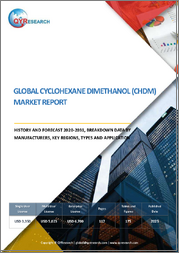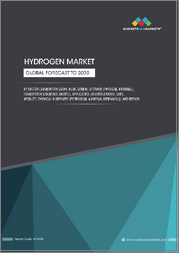
|
시장보고서
상품코드
1678497
세계의 메탄올 시장 : 시장 규모, 점유율, 동향 분석 보고서 - 용도별, 지역별, 부문별 예측(2025-2030년)Methanol Market Size, Share & Trends Analysis Report By Application (Formaldehyde, Gasoline, Acetic Acid, Dimethyl Ether, MTO/MTP, Biodiesel), By Region(North America, Europe, APAC, Latin America, MEA), And Segment Forecasts, 2025 - 2030 |
||||||
메탄올 시장의 성장 및 동향 :
세계의 메탄올 시장 규모는 2030년에는 641억 4,000만 달러에 달할 것으로 예측되며, 2025년부터 2030년까지 CAGR은 9.1%를 나타낼 것으로 예측됩니다.
메탄올의 탁월한 혼합 능력과 높은 옥탄가는 연료로서 메탄올 소비를 촉진하는 주요 요인입니다.
메탄올은 메틸 알코올이나 나무 알코올이라고도 불리며 투명하고 휘발성인 액체로 가연성이 있으며 에탄올과 음용 알코올과 비슷한 향기가 있습니다. 가장 일반적으로 사용되는 산업용 화학 물질 중 하나입니다. 포름알데히드, 아세트산, MTBE(Methyl Tert-Butyl Ether), 디메틸 에테르(DME), 바이오디젤, 올레핀 등 다양한 다른 화학 물질의 생산에서 전구체 역할을 합니다.
아세트산, 포름알데히드, DME에 대한 수요 증가는 아시아태평양에서 메탄올 산업 성장의 주요 촉진요인입니다. 또한 러시아와 우크라이나 전쟁이 계속되는 가운데 아시아태평양의 메탄올 수급은 예측 기간 동안 안정될 것으로 예측됩니다.
소수의 메탄올 제조업체는 다양한 판매 채널을 통해 메탄올을 제조하고 세계 여러 지역의 다양한 최종 이용 산업에 판매하고 있으며 밸류체인에 통합되어 있습니다. 메탄올 유통에 종사하는 제조업체에는 BASF SE, Methanex Corporation, 사우디아라비아 기초 산업 공사(SABIC)등이 있습니다.
메탄올-올레핀(MTO) 촉매를 사용함으로써 나프타 분해 공정의 대안적인 접근법으로서 메탄올 또는 석탄 원료로부터 올레핀 생산이 크게 개선되었습니다. 올레핀 수율의 향상이 세계 MTO 수요의 주요 원동력이 되고 있습니다.
메탄올 시장 보고서 하이라이트
- 메탄올은 식물성 오일 또는 지방산을 메탄올과 화학 반응시켜 제조되는 바이오디젤의 주요 성분 중 하나입니다.
- 메탄올은 독성이 있으며 적절하게 치료하지 않으면 사람의 건강과 환경에 위험을 초래합니다.
- 예측 기간 중 2024년 시장 점유율은 23.5%로 포름알데히드 부문이 시장을 독점했습니다.
- 메탄올-올레핀(MTO) 촉매는 메탄올과 석탄 원료로부터 올레핀을 제조할 때 상당히 개선되어 기존의 나프타 분해 공정을 대체할 수 있는 옵션을 제공합니다.
- 아시아태평양은 메탄올 시장 성장의 급선봉이고, 중국이 세계적으로 메탄올의 주요 생산국 및 소비국이며, 일본과 한국 등 다른 아시아 국가들이 이어지고 있습니다.
목차
제1장 조사 방법 및 범위
제2장 주요 요약
제3장 시장의 변수, 동향 및 범위
- 세계 메탄올 시장 전망
- 밸류체인 분석
- 원재료 전망
- 제조 및 기술 전망
- 판매 채널 분석
- 가격 동향 분석
- 가격에 영향을 미치는 요인
- 규제 프레임워크
- 표준 및 컴플라이언스
- 시장 역학
- 시장 성장 촉진요인 분석
- 시장 성장 억제요인 분석
- 시장 과제 분석
- 시장 기회 분석
- Porter's Five Forces 분석
- 공급기업의 협상력
- 구매자의 협상력
- 대체 위협
- 신규 참가업체의 위협
- 경쟁 기업간 경쟁 관계
- PESTLE 분석
- 정치
- 경제
- 사회 상황
- 기술
- 환경
- 법률
제4장 메탄올 시장 : 용도별 추정 및 동향 분석
- 메탄올 시장 : 용도별 변동 분석(2023년, 2030년)
- 포름알데히드
- 가솔린
- 아세트산
- MTBE
- 디메틸에테르
- MTO 및 MTP
- 바이오디젤
- 기타 용도
제5장 메탄올 시장 : 지역별 추정 및 동향 분석
- 지역별 분석(2023년, 2030년)
- 북미
- 용도별(2018-2030년)
- 미국
- 유럽
- 용도별(2018-2030년)
- 독일
- 아시아태평양
- 용도별(2018-2030년)
- 중국
- 인도
- 일본
- 라틴아메리카
- 용도별(2018-2030년)
- 중동 및 아프리카
- 용도별(2018-2030년)
제6장 경쟁 구도
- 주요 시장 진출기업에 의한 최근의 동향
- 기업 분류
- 기업의 시장 점유율 분석(2024년)
- 기업의 시장 포지셔닝 분석(2024년)
- 생산 능력(2024년)
- 전략 매핑
- 기업 프로파일 및 상장 기업
- BASF SE
- Mitsui &Co. Ltd.
- Celanese Corporation
- Petroliam Nasional Berhad(PETRONAS)
- Argana Group
- Methanex Corporation
- Mitsubishi Gas Chemical Co., Inc.
- QAFAC(Qatar Fuel Additives Company Limited)
- Zagros Petrochemical Company
Methanol Market Growth & Trends:
The global methanol market size is anticipated to reach USD 64.14 billion in 2030 and is projected to grow at a CAGR of 9.1% from 2025 to 2030. Exceptional blending capacity and high-octane rating of the product are the key factors driving the consumption of methanol as fuel.
Methanol, also referred to as methyl alcohol or wood alcohol, is a clear and volatile liquid that is flammable and has a scent similar to that of ethanol or drinking alcohol. It is one of the most commonly used industrial chemicals. It serves as a precursor in the production of various other chemicals, such as formaldehyde, acetic acid, Methyl Tert-Butyl Ether (MTBE), Dimethyl Ether (DME), biodiesels, olefins, and more.
Increasing demand for acetic acid, formaldehyde, and DME are the key drivers for the methanol industry's growth in Asia Pacific. In addition, the product's supply and demand across Asia Pacific are projected to be stable during the forecast period, with the ongoing Russia-Ukraine war.
A few methanol manufacturers are integrated into the value chain as they manufacture and distribute methanol through various sales channels to different end-use industries in different regions of the world. Some manufacturers of methanol involved in its distribution are BASF SE, Methanex Corporation, and Saudi Arabia Basic Industries Corporation (SABIC).
Using methanol-to-olefin (MTO) catalysts has significantly improved olefin production from methanol or coal feedstocks as an alternative approach to the naphtha cracking process. Increased olefin yields have been the primary driver of the global demand for MTO.
Methanol Market Report Highlights:
- Methanol is one of the major components in the production of biodiesel, which is manufactured by chemically reacting vegetable oil or fatty acid with methanol
- Methanol is toxic and poses risks to human health and the environment, if not handled properly.
- The formaldehyde segment dominated the market with a market share of 23.5% in 2024, during the forecast period
- Methanol-to-olefin (MTO) catalysts have significantly improved in producing olefins from methanol or coal feedstocks, offering an alternative to the traditional naphtha cracking process.
- Asia Pacific is the spearhead of methanol market growth, with China being the major producer and consumer of methanol on a global scale, followed by other Asian countries, such as Japan and South Korea.
Table of Contents
Chapter 1. Methodology and Scope
- 1.1. Market Segmentation & Scope
- 1.2. Market Definition
- 1.3. Information Procurement
- 1.3.1. Information Analysis
- 1.3.2. Market Formulation & Data Visualization
- 1.3.3. Data Validation & Publishing
- 1.4. Research Scope and Assumptions
- 1.4.1. List of Data Sources
Chapter 2. Executive Summary
- 2.1. Market Snapshot
- 2.2. Segmental Outlook
- 2.3. Competitive Outlook
Chapter 3. Market Variables, Trends, and Scope
- 3.1. Global Methanol Market Outlook
- 3.2. Value Chain Analysis
- 3.2.1. Raw Material Outlook
- 3.2.2. Manufacturing/Technology Outlook
- 3.2.3. Sales Channel Analysis
- 3.3. Price Trend Analysis
- 3.3.1. Factors Influencing Prices
- 3.4. Regulatory Framework
- 3.4.1. Standards & Compliances
- 3.5. Market Dynamics
- 3.5.1. Market Driver Analysis
- 3.5.2. Market Restraint Analysis
- 3.5.3. Market Challenges Analysis
- 3.5.4. Market Opportunity Analysis
- 3.6. Porter's Five Forces Analysis
- 3.6.1. Bargaining Power of Suppliers
- 3.6.2. Bargaining Power of Buyers
- 3.6.3. Threat of Substitution
- 3.6.4. Threat of New Entrants
- 3.6.5. Competitive Rivalry
- 3.7. PESTLE Analysis
- 3.7.1. Political
- 3.7.2. Economic
- 3.7.3. Social Landscape
- 3.7.4. Technology
- 3.7.5. Environmental
- 3.7.6. Legal
Chapter 4. Methanol Market: Application Estimates & Trend Analysis
- 4.1. Methanol Market: Application Movement Analysis, 2023 & 2030
- 4.2. Formaldehyde
- 4.2.1. Market estimates and forecasts, 2018 - 2030 (USD Billion)
- 4.3. Gasoline
- 4.3.1. Market estimates and forecasts, 2018 - 2030 (USD Billion)
- 4.4. Acetic Acid
- 4.4.1. Market estimates and forecasts, 2018 - 2030 (USD Billion)
- 4.5. MTBE
- 4.5.1. Market estimates and forecasts, 2018 - 2030 (USD Billion)
- 4.6. Dimethyl Ether
- 4.6.1. Market estimates and forecasts, 2018 - 2030 (USD Billion)
- 4.7. MTO/MTP
- 4.7.1. Market estimates and forecasts, 2018 - 2030 (USD Billion)
- 4.8. Biodiesel
- 4.8.1. Market estimates and forecasts, 2018 - 2030 (USD Billion)
- 4.9. Other Applications
- 4.9.1. Market estimates and forecasts, 2018 - 2030 (USD Billion)
Chapter 5. Methanol Market: Regional Estimates & Trend Analysis
- 5.1. Regional Analysis, 2023 & 2030
- 5.2. North America
- 5.2.1. Market estimates and forecasts, 2018 - 2030 (USD Billion)
- 5.2.2. Market estimates and forecasts, by application, 2018 - 2030 (USD Billion)
- 5.2.3. U.S.
- 5.2.3.1. Market estimates and forecasts, 2018 - 2030 (USD Billion)
- 5.2.3.2. Market estimates and forecasts, by application, 2018 - 2030 (USD Billion)
- 5.3. Europe
- 5.3.1. Market estimates and forecasts, 2018 - 2030 (USD Billion)
- 5.3.2. Market estimates and forecasts, by application, 2018 - 2030 (USD Billion)
- 5.3.3. Germany
- 5.3.3.1. Market estimates and forecasts, 2018 - 2030 (USD Billion)
- 5.3.3.2. Market estimates and forecasts, by product, 2018 - 2030 (USD Billion)
- 5.3.3.3. Market estimates and forecasts, by application, 2018 - 2030 (USD Billion)
- 5.4. Asia Pacific
- 5.4.1. Market estimates and forecasts, 2018 - 2030 (USD Billion)
- 5.4.2. Market estimates and forecasts, by application, 2018 - 2030 (USD Billion)
- 5.4.3. China
- 5.4.3.1. Market estimates and forecasts, 2018 - 2030 (USD Billion)
- 5.4.3.2. Market estimates and forecasts, by application, 2018 - 2030 (USD Billion)
- 5.4.4. India
- 5.4.4.1. Market estimates and forecasts, 2018 - 2030 (USD Billion)
- 5.4.4.2. Market estimates and forecasts, by application, 2018 - 2030 (USD Billion)
- 5.4.5. Japan
- 5.4.5.1. Market estimates and forecasts, 2018 - 2030 (USD Billion)
- 5.4.5.2. Market estimates and forecasts, by application, 2018 - 2030 (USD Billion)
- 5.5. Latin America
- 5.5.1. Market estimates and forecasts, 2018 - 2030 (USD Billion)
- 5.5.2. Market estimates and forecasts, by application, 2018 - 2030 (USD Billion)
- 5.6. Middle East & Africa
- 5.6.1. Market estimates and forecasts, 2018 - 2030 (USD Billion)
- 5.6.2. Market estimates and forecasts, by application, 2018 - 2030 (USD Billion)
Chapter 6. Competitive Landscape
- 6.1. Recent Developments by Key Market Participants
- 6.2. Company Categorization
- 6.3. Company Market Share Analysis, 2024
- 6.4. Company Market Positioning Analysis, 2024
- 6.5. Production Capacities, 2024
- 6.6. Strategy Mapping
- 6.7. Company Profiles/Listing
- 6.7.1. BASF SE
- 6.7.1.1. Company Overview
- 6.7.1.2. Financial Performance
- 6.7.1.3. Product Benchmarking
- 6.7.2. Mitsui & Co. Ltd.
- 6.7.2.1. Company Overview
- 6.7.2.2. Financial Performance
- 6.7.2.3. Product Benchmarking
- 6.7.3. Celanese Corporation
- 6.7.3.1. Company Overview
- 6.7.3.2. Financial Performance
- 6.7.3.3. Product Benchmarking
- 6.7.4. Petroliam Nasional Berhad (PETRONAS)
- 6.7.4.1. Company Overview
- 6.7.4.2. Financial Performance
- 6.7.4.3. Product Benchmarking
- 6.7.5. Argana Group
- 6.7.5.1. Company Overview
- 6.7.5.2. Financial Performance
- 6.7.5.3. Product Benchmarking
- 6.7.6. Methanex Corporation
- 6.7.6.1. Company Overview
- 6.7.6.2. Financial Performance
- 6.7.6.3. Product Benchmarking
- 6.7.7. Mitsubishi Gas Chemical Co., Inc.
- 6.7.7.1. Company Overview
- 6.7.7.2. Financial Performance
- 6.7.7.3. Product Benchmarking
- 6.7.8. QAFAC (Qatar Fuel Additives Company Limited)
- 6.7.8.1. Company Overview
- 6.7.8.2. Financial Performance
- 6.7.8.3. Product Benchmarking
- 6.7.9. Zagros Petrochemical Company
- 6.7.9.1. Company Overview
- 6.7.9.2. Financial Performance
- 6.7.9.3. Product Benchmarking
- 6.7.1. BASF SE
(주말 및 공휴일 제외)


















